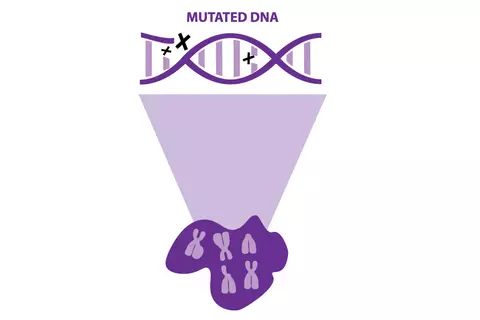Circulating tumour DNA as a useful marker to determine tumour activity in individuals with hepatocellular carcinoma
Campani C et al, Gut. 2024;73(11):1870–82
In this study, tumour mutations in circulating DNA were analyzed longitudinally and compared to mutations in tumour material from the same individuals. Tumour-specific mutations in the circulation reflected those in the tumor tissue and changes in the mutational burden correlated with the treatment responses and tumour stage.
Background: Tulisokibart is a tumor necrosis factor-like cytokine 1A (TL1A) monoclonal antibody in development for the treatment of moderately to severely active ulcerative colitis. A genetic-based diagnostic test was designed to identify patients with an increased likelihood of response.

Methods: The authors randomly assigned patients with glucocorticoid dependence or failure of conventional or advanced therapies for ulcerative colitis to receive intravenous tulisokibart (1000 mg on day 1 and 500 mg at weeks 2, 6, and 10) or placebo. Cohort 1 included patients regardless of status with respect to the test for likelihood of response. Cohort 2 included only patients with a positive test for likelihood of response. The primary analysis was performed in cohort 1; the primary end point was clinical remission at week 12. Patients with a positive test for likelihood of response from cohorts 1 and 2 were combined in prespecified analyses.
Results: In cohort 1, a total of 135 patients underwent randomization. A significantly higher percentage of patients who received tulisokibart had clinical remission than those who received placebo (26% vs. 1%; difference, 25 percentage points; 95% confidence interval [CI]: 14–37; p < 0.001). In cohort 2, a total of 43 patients underwent randomization. A total of 75 patients with a positive test for likelihood of response underwent randomization across both cohorts. Among patients with a positive test for likelihood of response (cohorts 1 and 2 combined), clinical remission occurred in a higher percentage of patients who received tulisokibart than in those who received placebo (32% vs. 11%; difference, 21 percentage points; 95% CI: 2–38; p = 0.02). Among all the enrolled patients, the incidence of adverse events was similar in the tulisokibart and placebo groups; most adverse events were mild to moderate in severity.
Conclusions: In this short-term trial, tulisokibart was more effective than placebo in inducing clinical remission in patients with moderately to severely active ulcerative colitis.